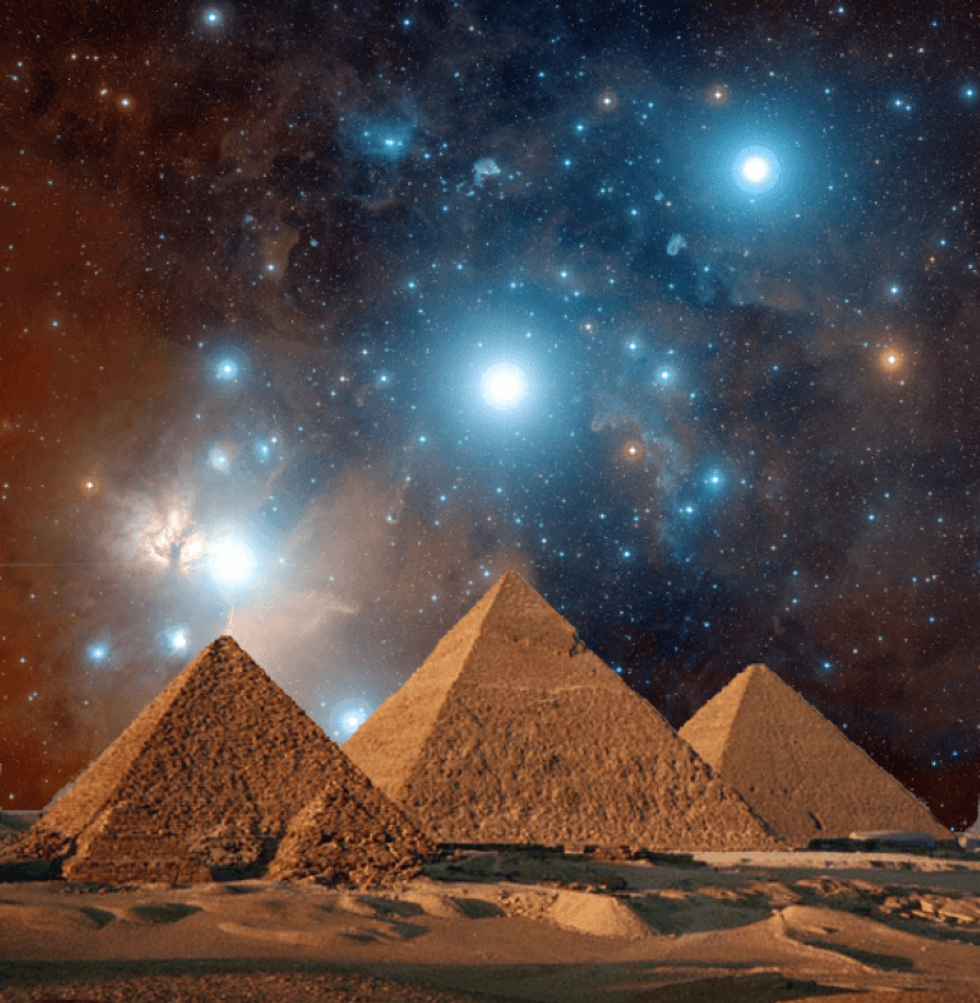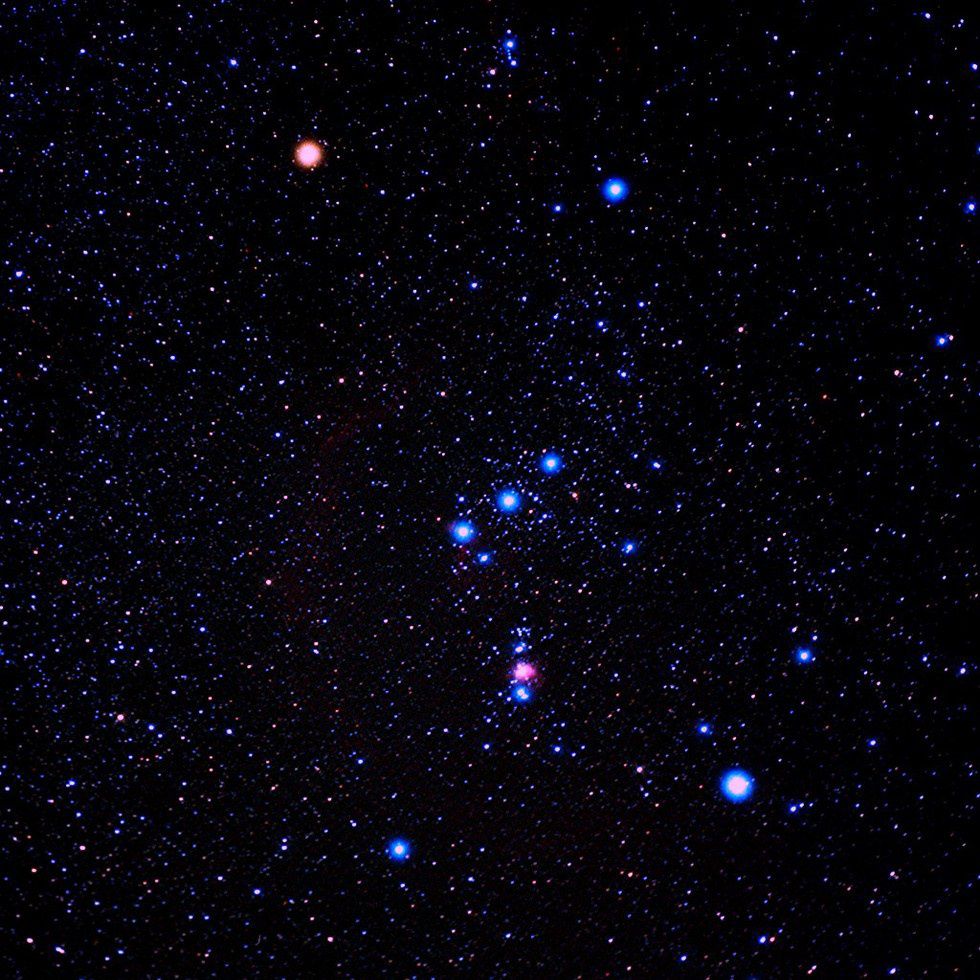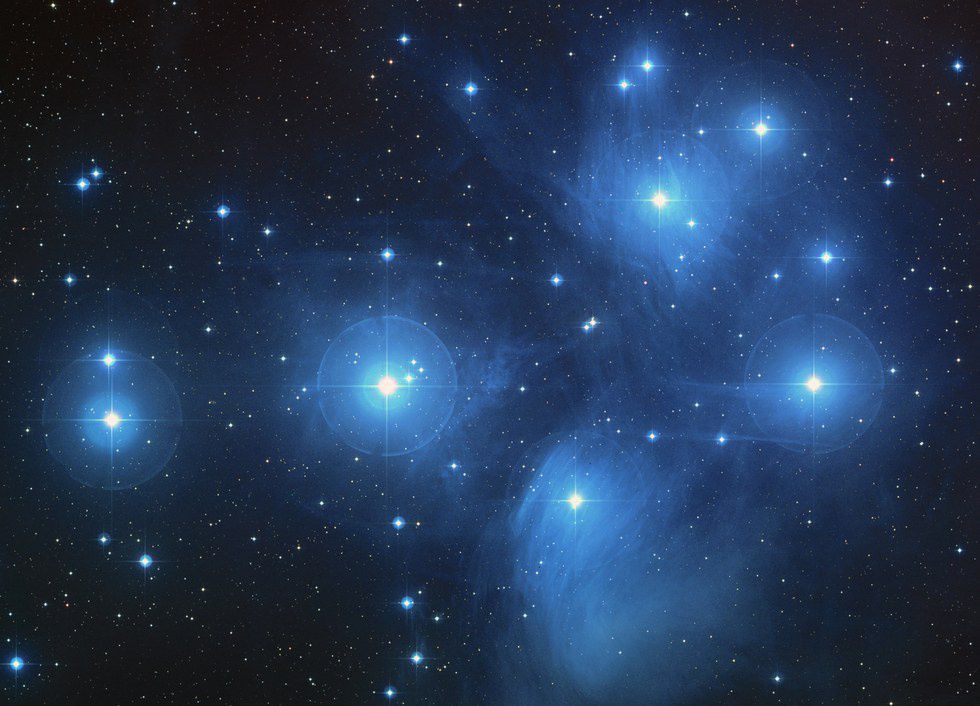All throughout history, humans have looked to the heavens for knowledge: when to plant, where to travel, how to tell time and find out who we are. These are a few of the things we have learned from celestial bodies since time immemorial. But there is a curious collection of stars that has continued through the ages to fascinate beyond all earthly reason: Orion.
In 1994, esoteric historians Robert Bauval and Adrian Gilbert published their Orion Correlation Theory in The Orion Mystery. They postulated that the pyramids of ancient Egypt plotted out a map of the stars. Historians and Egyptologists received the theory with much controversy. Dr. Robert Chadwick, a student of the ancient Near East, found most of their correlations to be a stretch of the imagination: “Robert Bauval and Adrian Gilbert never succeeded in matching more than three pyramids to three stars at any one time” (James, P., & Thorpe, N. (1999), Ancient Mysteries, New York: Ballantine Books, 133). Fortunately, those three stars proved to be a significant find.
Before his Orion Correlation Theory, Bauval was pondering the layout of the Great Pyramids of Giza. The Pyramid of Menkaure was inexplicably smaller and its location was offset from the line created by the other two Great Pyramids. While stargazing, a friend of Bauval had mentioned that the top right star in Orion’s Belt appeared smaller and offset from the other two (James, Thorpe, 129). The relative spacing matched. Despite the fact that many Egyptologists and similar specialists “generally know nothing of astronomy and have a habit of ignoring new ideas,” a few scholars validated the discovery. I. E. S. Edwards, a renowned pyramid expert, entertained the correlation, and even accepted the finding that the southern shaft of the Pyramid of Khufu (The Great Pyramid) was aligned with Orion’s belt. The Director of the Griffith Institute for Egyptology at Oxford University wrote to Bauval, saying he was “prepared to consider seriously the observation that the Giza Pyramids were positioned or sited in a manner as to represent the three stars of Orion” (James, Thorpe, 131).
To the ancient Egyptian astronomers, these three stars held great significance. But why not the whole constellation?
“On the tomb of the Eighteenth Dynasty vizier Senmut (about 1450 B.C.) the constellation Sahu (Orion) is represented simply by a line of three stars, not by seven.” What we refer to today as Orion’s Belt was once observed as the entirety of the asterism. “Compare the ancient Chinese name for Orion—Shen, meaning a ‘union of three’” (James, Thorpe, 134). The Pyramid Texts of the Fifth and Sixth Dynasties referred to this celestial trinity as Sahu. This was believed to be the dwelling place of Osiris, the god associated with resurrection and life after death.
In fact, the Pyramid Texts treat Sahu as an actual, physical place.
Hence, exact location of Sahu was of major import. Technologically precise shafts were built into the Great Pyramid of Khufu at Giza, which pointed directly to two major stellar bodies. Alexander Badawy, an Egyptologist from Egypt, published his findings about the shafts in 1964.
“His theory was backed with calculations made by astronomer Virginia Trimple. The northern shaft (inclined at 31 degrees to the horizontal) points directly at Alpha Draconis, which was the Pole Star between about 3000 and 2500 B.C. As for the southern shaft (inclined at 44.5 degrees), it lines up with the position of Orion at culmination between 2840 to 2480 B.C.; every twenty-four hours the 'belt' of stars in the middle of this constellation would have passed directly over the shaft.” (James, Thorpe, 130). The Egyptians took such care with framing Orion in their literature and architecture. What caused such fascination to set these three stars apart from billions of others? Did those ancient astronomers know or observe something that we are only beginning to understand? We do know that Egypt was not alone.
The book of Job, considered to be the oldest book of the Bible, makes special mention of Orion amongst other constellations. Job 38:31 is most particular in its language: “Canst thou bind the sweet influences of Pleiades, or loose the bands of Orion?” (emphasis added). Biblically, this calls to mind Jesus’ assurance that whatever his followers bind or loose on earth will be bound or loosed in heaven (Matthew 18:18). Scientifically, this represents an observable phenomenon. Dr. Walter J. Veith, Ph.D., a zoologist and comparative physiologist from South Africa, made the following connection: “The Pleiades is a ‘bound cluster,’ meaning that the stars are bound in their position by the high forces of gravity prevalent in the system. Orion on the other hand contains systems which are flying apart rapidly (loosed). Amazingly, this very condition is described in Job 38:31” (Veith, Walter J., The Genesis Conflict, Delta, British Colombia: Amazing Discoveries, 2002, 158). Moreover, the Pleiades is said to have originated in a tightly bound formation resembling the Orion nebula. This either connotes a beautiful cosmic coincidence, or evidence that the author of Job knew more than mainstream historians would care to admit.
Orion and the Pleiades are mentioned earlier in the book of Job in eschatological language. "Which removeth the mountains, and they know not: which overturneth them in his anger. Which shaketh the earth out of her place, and the pillars thereof tremble. Which commandeth the sun, and it riseth not; and sealeth up the stars. Which alone spreadeth out the heavens, and treadeth upon the waves of the sea. Which maketh Arcturus, Orion, and Pleiades, and the chambers of the south." It seems that these asterisms are named specifically in an apocalyptic context. Amos chapter five also mentions Orion and the Pleiades amongst warnings of the Judgment and the coming Day of the Lord. What could be their connection?
Fast forward to the modern age. December 16, 1848. Ellen G. White, a 19th and 20th Century author of over 5,000 articles and 40 books, reported receiving a vision from the Lord. She described grand eschatological events in great detail, such as the sun, moon and stars being moved out of place.
"Dark heavy clouds came up, and clashed against each other. The atmosphere parted and rolled back; then we could look up through the open space in Orion, whence came the voice of God. The holy city will come down through that open space" (Ellen G. White, Early Writings of Ellen G. White, Washington, D.C.: Review and Herald Pub. Association, 1945, 41).
The imagery parallels what Jesus told his disciples on the Mount of Olives: “Immediately after the tribulation of those days shall the sun be darkened, and the moon shall not give her light, and the stars shall fall from heaven, and the powers of the heavens shall be shaken” (Matthew 24:30). White’s regard for the Bible as the written Word of God is no secret, so it is no surprise that her published visions and writings should coincide with both the Old and New Testaments. But in this case, it seems that her given perception explains the ancient cultures' findings, and may even reveal something big for modern science to explore.






















